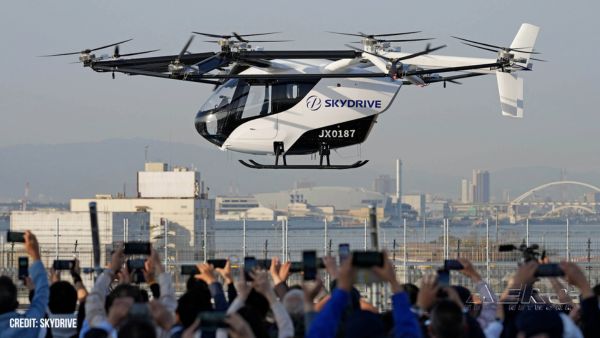Major milestone means we are just that much closer to seeing
the Shuttle return to flight
The three Main Engines that will help launch Space Shuttle
Discovery on its Return to Flight mission were installed in the
Shuttle this week at the Orbiter Processing Facility at NASA's
Kennedy Space Center in Florida.
Installation of the engines, clustered at the aft, or tail, of
the orbiter to provide power to launch the Shuttle into low-Earth
orbit, was completed December 8.
"This milestone concludes the assembly, processing, inspection,
data review and tests required for acceptance of engines," said
Gene Goldman, Space Shuttle Main Engine project manager at NASA's
Marshall Space Flight Center in Huntsville (AL).
The Return to Flight mission, designated as STS-114, is
currently targeted for May or June 2005. The seven-member Discovery
crew will fly to the International Space Station primarily to test
and evaluate new procedures for flight safety, including Space
Shuttle inspection and repair techniques.
Returning the Space Shuttle to flight is the first step in
realizing the Vision for Space Exploration, which calls for a
"stepping-stone" strategy of human and robotic missions to achieve
the nation's new exploration goals, starting with returning the
Shuttle safely to flight and completing the International Space
Station.
Installed on Discovery were engines number 2057, 2056 and 2054.
STS-114 will be the first flight for engine 2057, the third for
engine 2056 and the fifth for engine 2054.
"Although there is still much work to be done, the engines are
the last big components to install on the orbiter prior to rolling
over to the Vehicle Assembly Building," said Stephanie Stilson,
NASA's Discovery vehicle manager. "This shows we're moving in the
right direction for Return to Flight."
"This milestone concludes the assembly, processing, inspection,
data review and tests required for acceptance of engines," said
Gene Goldman, Space Shuttle Main Engine project manager at NASA's
Marshall Space Flight Center in Huntsville (AL).
Weighing slightly more than 7,000 pounds, the Main Engine is the
world's largest reusable liquid rocket engine. After the Space
Shuttle orbiter returns to Earth following a mission, the engines
are taken to the Space Shuttle Main Engine Processing Facility at
Kennedy Space Center for post-flight inspections and maintenance.
They are then sent to NASA's Stennis Space Center (MS), for a
pre-flight acceptance test.
During lift-off, each of the three engines consumes 132,000
gallons of liquid hydrogen and 49,000 gallons of liquid oxygen
fuel. That's a total of more than half a million gallons of fuel
during an 8-minute, 30-second launch. In fact, if the three engines
pumped water instead of fuel, they could drain an average-sized
home swimming pool in 25 seconds.
At full power, the three engines combined generate as much
energy as 23 Hoover Dams and operate at temperatures that range
from minus 423 degrees Fahrenheit to 6,000 degrees Fahrenheit,
hotter than the boiling point of iron.
The Rocketdyne Propulsion and Power division of The Boeing Co.
of Canoga Park (CA), manufactures the Main Engines. Pratt and
Whitney, a United Technologies Company of West Palm Beach (FL),
builds the high-pressure turbo pumps. Marshall manages the Space
Shuttle Main Engine Project for the Space Shuttle Propulsion
Program.
 ANN's Daily Aero-Term (08.04.25): Wind Shear
ANN's Daily Aero-Term (08.04.25): Wind Shear ANN's Daily Aero-Linx (08.04.25)
ANN's Daily Aero-Linx (08.04.25) ANN FAQ: Contributing To Aero-TV
ANN FAQ: Contributing To Aero-TV NTSB Prelim: Van's Aircraft RV-14
NTSB Prelim: Van's Aircraft RV-14 Classic Aero-TV: Portrait of the Army Aviation Heritage Foundation
Classic Aero-TV: Portrait of the Army Aviation Heritage Foundation


